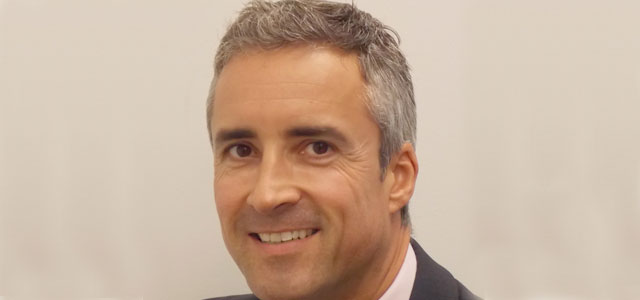D&O insurance claims are changing: four steps to ensuring your tower is strong enough

D&O claims are becoming more frequent, costly and complex. Insurance towers are becoming warped and policyholders must employ new tactics to ensure their D&O limit is adequate and the layering is optimal. Michael Lea of Lockton explains.
The future of directors' and officers' liability (D&O) claims is not what it used to be. The frequency and duration of claims is increasing due to a confluence of changes - legislative, regulatory, jurisdictional, political and funding-related. Indeed, data on US securities class action (which records claims against companies with US shares), suggest that 2016 saw the most US shareholder class actions since the 1990s.
Many of these D&O claims are becoming more fragmented, complex and longer-tail due to follow-on claims. The average securities class action case in the US, for instance, can take between three and six years to conclude, according to Allianz Global Corporate & Specialty (AGCS). The cost of claims is also increasing. Settlement data for underlying action indicates that the cost of settling shareholder actions has risen for the last six to seven years. Meanwhile, during the same timeframe, the cost of legal defence has almost doubled for large D&O claims in the US.
Insurance towers: not fit for purpose?
What does this mean for D&O insurance buyers? D&O insurance towers - which are often divided into layers provided by different insurers - are becoming warped. It is becoming harder to discern if a D&O limit is adequate, and whether the layering is optimal.
The US's Sarbanes-Oxley Act of 2002 and the UK's Companies Act 2006, for example, have meant that when a claim or investigation is brought against company executives, they are likely to owe separate and distinct duties and therefore require separate legal defence. So instead of one defence counsel representing the defence in a case, there could be three or four different law firms.
This has massively increased attritional costs for insurers paying the legal defence costs. We've seen legal cases where primary insurance limits have been entirely eroded by the defence costs. In these cases, the primary insurer is not really functioning as the primary insurer at all - more like a buffer for legal defence costs before the settlement discussions begin.
If the primary insurance layer - let's say £5-10 million - ends up being solely spent on legal fees, less underwriting rigour is required. This could lead to two things:
- Some insurers without a specialist D&O claims team entering the D&O primary layer market in search of healthy premiums;
- Excess insurers effectively performing the role of primary insurer - a role they would not necessarily be well-suited to or have experience of.
Some excess insurers may also be affected by the growth in follow-on claims, which they may be less accustomed to defending and ultimately paying. Increasingly, these excess insurers will need to focus more on their reserving practices and the overall defence strategy. In effect they will have to take greater interest in claims that initially appear to be below their attachment point.
These challenges are exacerbated by the fact that in some insurance towers each excess insurer still uses their proprietary excess form for their layer - creating anomalies in coverage interpretation and dispute resolution from layer to layer.
Tips for building a robust tower
What arrangement should D&O insurance buyers strive for? We would suggest the following four steps:
- Look very carefully at who the primary insurer is. Does the primary insurer have a specialist claims team with experience in large claims? Will it think strategically about the whole insurance tower when fighting the defence? Ideally D&O policies should have a strong primary insurer who leads the claim defence strategy and passes the agreed-upon defence strategy up the tower of insurers, if or when appropriate. The lead insurer lays the foundation for the insurance tower; its specialism therefore greatly determines the robustness of the whole tower.
- Try to ensure all insurers in the insurance tower engage in a consolidated defence strategy - vital for large, complex claims that move up the tower. This can be achieved by establishing a claims protocol that governs billing guidelines for defence counsel, timelines and budgets. In addition, create lines for communication and regular updates at the very start of the claims notification.
- Try to have a single Monitoring Counsel for the claim, and pay close attention to who is chosen. A Monitoring Counsel can be powerful in pulling together different interests, because it a) spends time with the insurance buyer; b) really understands the claim; and c) understands the insurers' interests. With more D&O claims in future likely to involve more excess insurers, the Monitoring Counsel's oversight can make a crucial difference.
- Give more thought to a D&O insurance tower with fewer layers - with each layer larger and based on a quota share using the same excess policy form. Have a pre-agreed claims protocol to give the layer lead the driving seat on a claim. In light of the aforementioned developments, this arrangement provides many benefits that are increasingly pertinent:
- A quota share means the insurers involved in the insurance tower have more "skin in the game" at the same attachment point. This increases the chance of them coordinating their defence strategy.
- A quota share also means that if one of the insurers involved in the insurance tower exits the market (with the business going into run-off), the other insurers can still provide oversight on that portion of the risk (less true in a layered arrangement).
- Fewer insurance layers mean fewer attachment points at which disputes may occur.
Following these four steps should ensure that your D&O insurance tower remains robust even if subject to a complex, lengthy claim and subsequent follow-on suits. Other towers, however, may start to tremor, or might even topple.

Michael Lea is head of management liability at Lockton.
